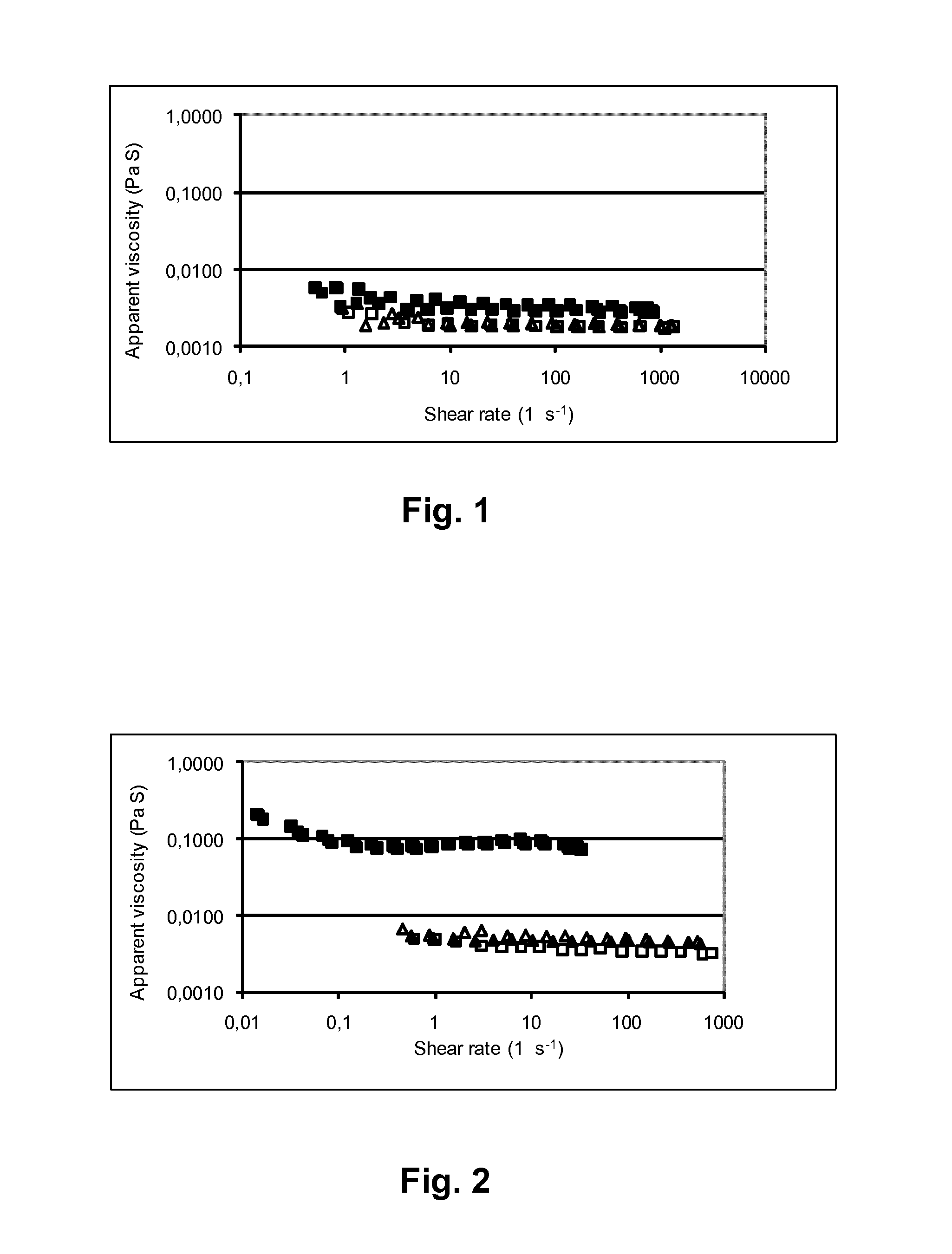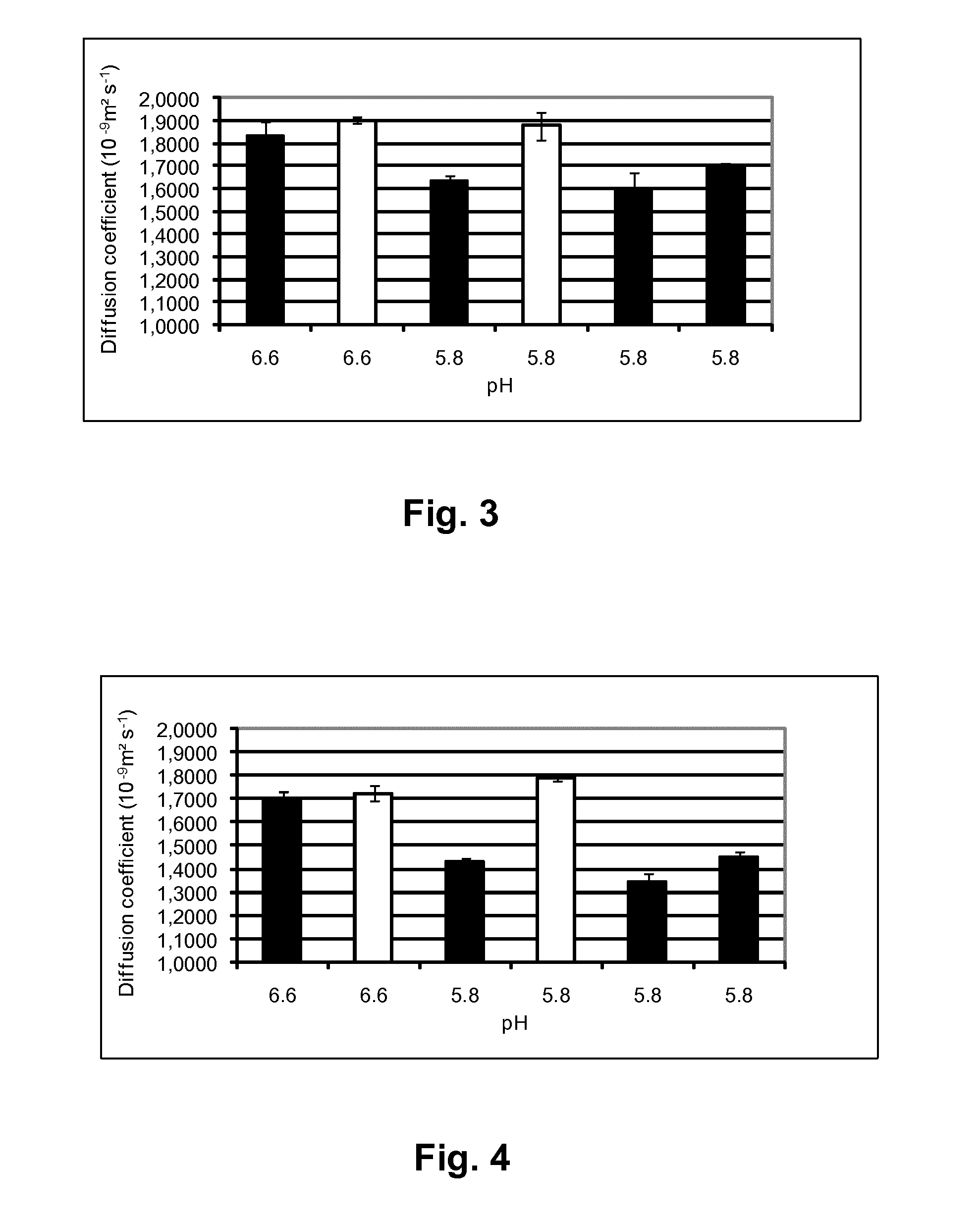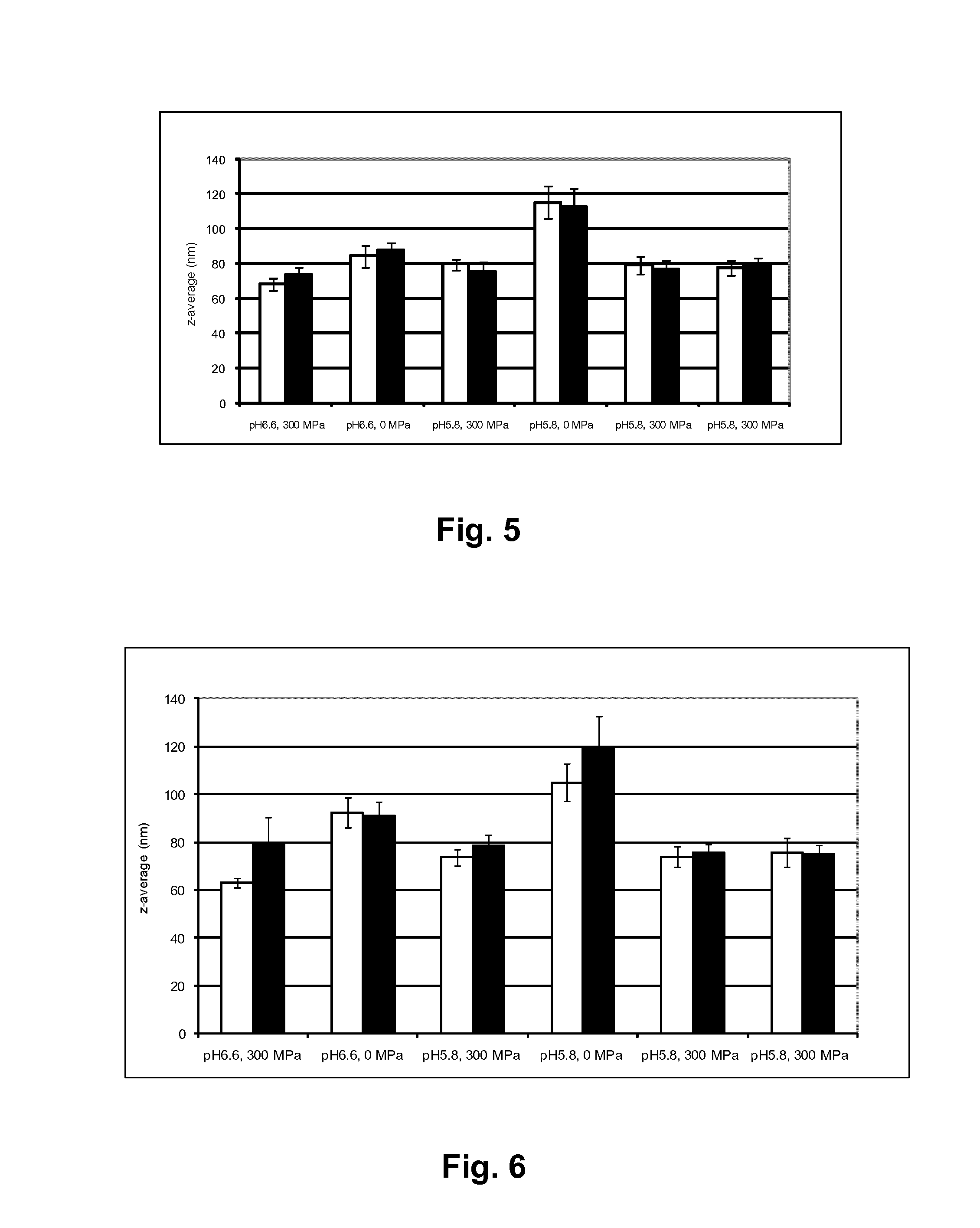Milk products with increased water binding
a technology of casein and water binding capacity, which is applied in the field of new modified casein concentrate, can solve the problems of unrecognized structure of mf cheese, and achieve the effects of high binding capacity, and increasing the water binding capacity of casein
- Summary
- Abstract
- Description
- Claims
- Application Information
AI Technical Summary
Benefits of technology
Problems solved by technology
Method used
Image
Examples
example 1
Milk Concentrate
[0134]Purpose
[0135]The aim of the experiments was to achieve an understanding of how changes in process parameters, such as acidification and dynamic high-shear treatment with pressure, affect structure and properties of micro filtrated (MF) milk concentrate based on respectively 4% and 8% casein MF milk.
[0136]Material & Methods
[0137]Preparation of Samples of MF Skimmed Milk:
[0138]Low-pasteurized (73° C., 15 s) skimmed milk from Arla Foods was heated to 50° C. The MF process was carried out using a microfiltration unit (500 L h−1) (Arla Foods, Videbk, Denmark) equipped with 24 FR3B-6338 membranes (Synder, Vacaville, USA) with a nominal molecular weight cut-off of 800 kDa and an ultrafiltration (UF) unit (Arla Foods, Videbk, Denmark) equipped with 16 HFK328-6338 membranes (Koch, Wilmington, USA) with a nominal molecular weight cut-off of 5 kDa. The skimmed milk was concentrated batch wise to 4% and 8% casein, respectively, and diafiltration was carried out using three...
example 2
Serum
[0184]Serum Phase Separated from the Concentrate
[0185]The water binding was also measured in terms of separated serum in the samples after ultracentrifugation. The serum phase amounts (g) measured are mapped in FIGS. 10 and 11.
[0186]The samples comprising 8% casein which had been acidified and treated at high-shear pressure, viz. samples 8% P3, P5 and P6, showed increased water binding, viz. less separated serum after ultracentrifugation. The samples comprising 4% casein showed the same results for the acidified samples treated by high-shear pressure, viz. samples 4% P3, P5 and P6.
[0187]Serum Calcium Content
[0188]The serum calcium content was measured as described under “chemical analysis” above in the samples comprising 8% casein. The amount of calcium (mg) measured are displayed in Table 3. The samples comprising 8% casein which had been acidified and treated at dynamically high-shear pressure, viz. samples 8% P3, P5 and P6, showed increased amount of serum calcium / ml serum....
example 3
Acid Cheese Curd Application
[0189]Purpose
[0190]The aim of the experiment was to achieve a better understanding of how changes in process parameters such as acidification and dynamic high-shear pressure treatment affect structure and properties of cheese curd based on MF concentrate.
[0191]Material and Methods
[0192]Preparation of curd: 1 kg of cold MF concentrate with 3.6% of casein (pre-treated as described in material and methods example 1) was heated to 30° C. The MF concentrate was acidified with 10% lactic acid to pH 5.21 and heated (50° C., 30 min). The concentrate was subsequently drained (30 min) in cheese cups with filter. The amount of curd was weighed (kg), and the yield was calculated. Two experiments were conducted, one with a sample, which had been treated by high-shear pressure, and one which had not.
[0193]Results and Conclusion
[0194]The results from the two cheese experiments are presented in Table 5.
TABLE 5Yields from two experiments with and withoutdynamic high-shear...
PUM
 Login to View More
Login to View More Abstract
Description
Claims
Application Information
 Login to View More
Login to View More - R&D
- Intellectual Property
- Life Sciences
- Materials
- Tech Scout
- Unparalleled Data Quality
- Higher Quality Content
- 60% Fewer Hallucinations
Browse by: Latest US Patents, China's latest patents, Technical Efficacy Thesaurus, Application Domain, Technology Topic, Popular Technical Reports.
© 2025 PatSnap. All rights reserved.Legal|Privacy policy|Modern Slavery Act Transparency Statement|Sitemap|About US| Contact US: help@patsnap.com



